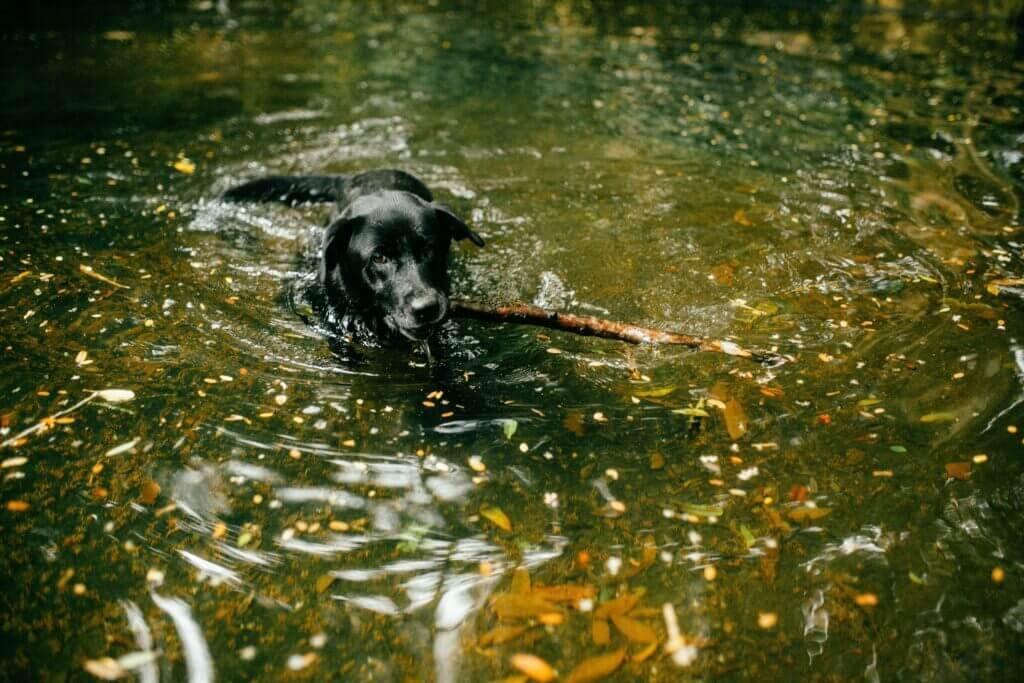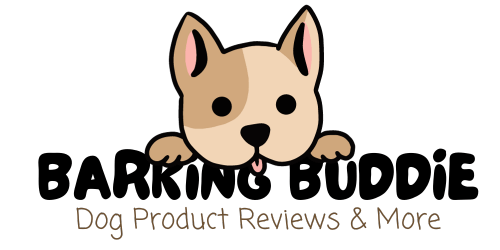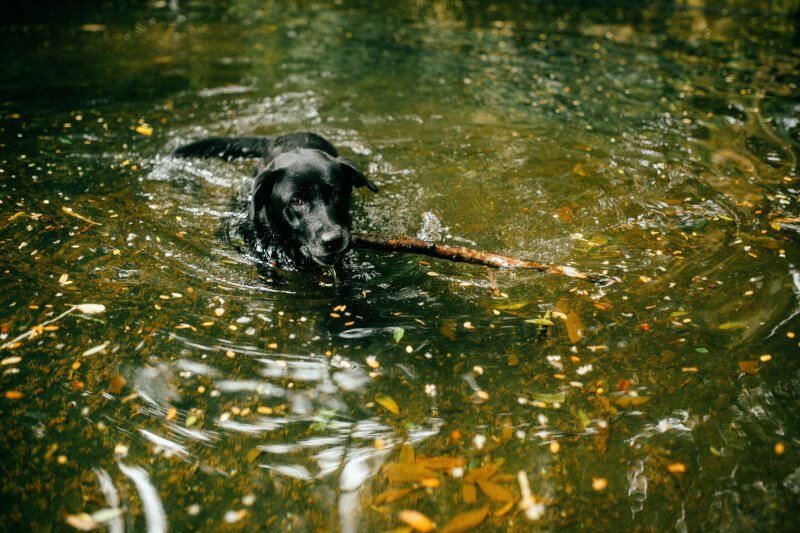You’re ready to step into the exciting world of being a dog owner, but before you dive headfirst into the dog community, it’s important to familiarize yourself with the proper etiquette. In this Beginner’s Guide to Dog Community Etiquette, we’ll cover everything from leash manners to socializing techniques, ensuring that you and your furry companion make a smooth and enjoyable entrance into this vibrant community. Get ready to unleash your dog’s potential while building lasting connections with fellow dog lovers!

Choosing the Right Dog Community
When it comes to choosing the right dog community, it’s important to do your research. Look into different dog communities in your area and find out what amenities and facilities they offer. Consider the specific needs of your dog’s breed and size, as not all communities may be suitable for every dog. It’s also important to assess the rules and regulations of each community to ensure they align with your expectations and values.
Researching Different Dog Communities
Before settling on a dog community, take the time to research and compare different options. Look for communities that have a good reputation and positive reviews from other dog owners. Consider factors such as the size of the community, the availability of amenities such as parks and walking trails, and whether they have separate areas for large and small dogs. This will help ensure that both you and your furry friend feel comfortable and have access to the things you need.
Considering Your Dog’s Breed and Size
It’s important to consider your dog’s breed and size when choosing a dog community. Some communities may be better suited for specific breeds or sizes of dogs. For example, if you have a small dog, you may want to find a community that has a designated small dog area to ensure their safety and comfort. On the other hand, if you have a large, energetic dog, you may want to look for a community that offers ample space for them to run and play.
Assessing the Amenities and Facilities
When choosing the right dog community, it’s essential to assess the amenities and facilities they offer. Look for communities that have well-maintained parks, walking trails, and play areas for dogs. Access to water sources and shaded areas can also be beneficial, especially during hot summer months. Additionally, some communities may offer grooming services, training classes, or even dog-friendly events and activities. Consider what amenities are important to you and your dog and choose a community that meets those needs.
Evaluating the Community’s Rules and Regulations
Before committing to a dog community, make sure to evaluate the community’s rules and regulations. Each community may have different guidelines in place to ensure the safety and well-being of all dogs and their owners. Pay attention to rules such as leash policies, required vaccinations, and waste disposal regulations. It’s important to choose a community that aligns with your values and that you can comfortably follow the rules and regulations set forth.
Preparing for Dog Community Activities
Once you have chosen the right dog community, it’s time to prepare for the activities you and your dog will participate in. Ensuring that your dog is up-to-date on vaccinations and licensing is crucial for their safety and the safety of other dogs in the community. This will help prevent the spread of diseases and ensure a healthy environment for everyone. Additionally, training your dog for socialization is important to ensure they can interact confidently and appropriately with other dogs and their owners.
Ensuring Your Dog is Vaccinated and Licensed
Before participating in any dog community activities, it’s essential to ensure that your dog is properly vaccinated and licensed. Regular vaccinations help protect your dog from common diseases and prevent the spread of illness to other dogs. Licensing your dog is also important as it helps identify them, making it easier to locate you should they ever get lost. It’s highly recommended to consult with your veterinarian to determine which vaccinations are necessary for your dog.
Training Your Dog for Socialization
Proper socialization is key when it comes to participating in dog community activities. Training your dog to be comfortable and well-mannered around other dogs and people will help prevent any unwanted behaviors or conflicts. Start by exposing your dog to different environments, sounds, and smells, gradually increasing the level of exposure. Encourage positive interactions with other dogs and reward your dog for good behavior. Remember, socialization is an ongoing process, so continue to expose your dog to new experiences and environments.
Understanding Basic Dog Behavior and Body Language
To ensure a positive experience for both you and your dog in the dog community, it’s important to understand basic dog behavior and body language. This will help you recognize signs of aggression, fear, or discomfort in other dogs, allowing you to take appropriate measures to keep everyone safe. Learn to interpret cues such as tail wagging, ear positions, and overall body posture. Additionally, educate yourself on common dog communication signals, such as play bows or submissive postures, to encourage positive interactions.
Gathering Essential Supplies
Before heading to the dog community, gather all the essential supplies you’ll need for a successful outing. This includes items such as waste bags for cleaning up after your dog, water and a bowl for hydration, treats for reward-based training, and a leash or harness. Depending on the community’s rules, you may also need to bring vaccination records or proof of licensing for your dog. Being prepared with the necessary supplies will ensure that you can focus on enjoying your time with your dog.
Arriving at the Dog Community
Once you have prepared for dog community activities, it’s time to head to the community. However, it’s important to follow certain guidelines upon arrival to ensure a safe and enjoyable experience for everyone involved. This includes following parking and leash policies, maintaining control of your dog at all times, respecting others’ space, and ensuring that your dog is calm and relaxed.
Following Parking and Leash Policies
When arriving at the dog community, make sure to follow any designated parking areas and adhere to the community’s leash policies. This may require keeping your dog on a leash until you reach a designated off-leash area or ensuring that your dog remains leashed at all times. Following these policies helps maintain order and minimizes the risk of accidents or conflicts between dogs.
Maintaining Control of Your Dog
Once inside the dog community, it’s essential to maintain control of your dog at all times. This means keeping a watchful eye on your dog’s behavior and being responsive to any signs of stress or discomfort. Ensure that your dog doesn’t wander too far away from you and has good recall when called. Keeping control of your dog allows you to intervene if necessary and prevents your dog from potentially causing any disruptions or conflicts.
Observing and Respecting Others’ Space
In a dog community, it’s important to be aware of your surroundings and to respect the space of others. Some dogs may prefer to have their personal space respected, so it’s essential to give them the room they need. Avoid allowing your dog to invade the personal space of other dogs or owners without their consent. Similarly, if another dog or owner indicates that they prefer not to interact, respect their wishes.

Making Sure Your Dog is Calm and Relaxed
Before allowing your dog to interact with others in the community, it’s crucial to ensure that they are calm and relaxed. A dog that is overly excited or anxious may not have the best interactions with other dogs, potentially leading to conflicts or negative experiences. Take a moment to help your dog calm down, practice exercises such as deep breathing, or engage in some gentle play to help them relax. A calm and relaxed dog is more likely to have positive interactions with others.
Interactions with Other Dogs and Owners
One of the highlights of a dog community is the opportunity for your dog to interact with others. However, it’s important to approach these interactions safely and respectfully. By understanding how to approach other dogs, allowing for proper greetings, recognizing signs of aggression or discomfort, and respecting other owners’ training methods, you can help create a positive and harmonious environment for everyone.
Approaching Other Dogs Safely
When approaching other dogs in the community, it’s crucial to do so safely and respectfully. Approach slowly and calmly while keeping an eye on both your dog and the other dog’s body language. Look for signs of relaxation and receptiveness, such as loose body postures and wagging tails. Avoid approaching if either dog shows signs of fear, aggression, or discomfort.
Allowing Dogs to Greet Each Other Properly
Once you have approached another dog and owner, it’s important to allow the dogs to greet each other properly. This means giving them the opportunity to sniff each other and engage in friendly behaviors such as play bows. Allow the dogs to take the lead and don’t force interactions. Be mindful of their body language and step in if either dog shows signs of discomfort or if play escalates into aggression.
Recognizing Signs of Aggression or Discomfort
While it’s important to encourage positive interactions between dogs, it’s equally important to recognize signs of aggression or discomfort. Dogs communicate through their body language, so it’s essential to pay attention to cues such as raised hackles, stiff body posture, growling, or showing teeth. If you notice any signs of potential aggression or discomfort, intervene by calmly redirecting your dog’s attention or removing them from the situation.
Respecting Other Owners’ Training Methods
In a dog community, it’s likely that each owner will have their own training methods and techniques. It’s essential to respect these differences and not interfere or criticize others’ approaches to training their dogs. While you may have your own preferences and opinions, it’s important to remember that each dog and owner is unique. Focus on your own dog’s behavior and training, and be supportive and understanding of others in the community.
Proper Dog Waste Management
Properly managing dog waste is essential when participating in a dog community. It ensures a clean and safe environment for everyone to enjoy. By bringing waste bags and cleaning supplies, following designated dog waste disposal areas, avoiding leaving waste behind, and reporting irresponsible owners, you can contribute to maintaining a clean and pleasant community atmosphere.

Bringing Waste Bags and Cleaning Supplies
Before heading to the dog community, be sure to bring waste bags and cleaning supplies to properly dispose of your dog’s waste. This includes carrying enough waste bags to clean up after your dog and any necessary cleaning supplies to address accidental messes or spills. By being prepared, you can quickly and efficiently clean up after your dog, making the community a cleaner and more pleasant place for everyone.
Following Designated Dog Waste Disposal Areas
Many dog communities have designated areas for dog waste disposal. It’s important to follow these guidelines and dispose of waste in the designated bins or areas. Avoid leaving waste bags on the ground or throwing them in regular trash bins. By following these specific instructions, you help maintain cleanliness and prevent any health hazards or unpleasant odors.
Avoiding Leaving Waste Behind
One of the most important aspects of responsible dog ownership is ensuring that you don’t leave any waste behind. Always clean up after your dog, even if you are in an area where waste disposal is not strictly enforced. Leaving waste behind can contribute to a negative environment for both dogs and owners, and can even pose health risks. Be considerate and respectful by cleaning up after your dog every time.
Reporting Irresponsible Owners
If you witness an owner consistently failing to clean up after their dog or displaying irresponsible behavior, it is important to take action. Many dog communities have systems in place for reporting such incidents, whether it’s through community management, local authorities, or designated reporting channels. By reporting irresponsible owners, you help ensure that everyone in the community understands the importance of responsible dog ownership and maintains a clean and positive environment.
Maintaining General Hygiene
Maintaining general hygiene is crucial for both your dog and yourself when participating in a dog community. By keeping your dog clean and well-groomed, avoiding bringing sick dogs to the community, maintaining personal hygiene, and using appropriate dog-safe cleaning products, you can help promote a healthy and comfortable environment for everyone.
Keeping Your Dog Clean and Well-Groomed
Regular grooming and cleanliness are essential for your dog’s well-being. This includes bathing your dog regularly to keep their coat clean and free of dirt or debris. Additionally, regular nail trimming, ear cleaning, and teeth brushing should be part of your grooming routine. By keeping your dog clean and well-groomed, you help prevent the spread of dirt and germs in the dog community and contribute to a healthier environment.
Avoiding Bringing Sick Dogs to the Community
If your dog is sick or displaying any symptoms of illness, it’s crucial to avoid bringing them to the dog community. Just like humans, dogs can spread contagious illnesses to other dogs. This can lead to the entire community being affected and potentially becoming a breeding ground for illness. If your dog is unwell, it’s best to keep them at home until they have fully recovered.

Maintaining Personal Hygiene
In addition to keeping your dog clean, it’s important to maintain your own personal hygiene when participating in a dog community. This includes practicing regular handwashing with soap and water, especially after handling waste bags or touching other dogs. If you plan on eating or drinking in the community, bring hand sanitizer or wipes to ensure cleanliness. By maintaining personal hygiene, you minimize the risk of spreading germs to others.
Using Appropriate Dog-Safe Cleaning Products
When cleaning up any messes or spills in a dog community, it’s important to use appropriate dog-safe cleaning products. Avoid using harsh chemicals or cleaning agents that may be harmful to dogs. Look for pet-friendly cleaning solutions, or consider using a mixture of water and vinegar for general cleaning purposes. By using dog-safe cleaning products, you help maintain a safe and comfortable environment for all dogs in the community.
Respecting Others and Their Dogs
Respecting others and their dogs is an essential part of dog community etiquette. By keeping noise levels to a minimum, staying attentive to your dog’s behavior, avoiding unwanted physical contact, and being respectful and friendly towards other dog owners, you contribute to a harmonious and enjoyable atmosphere for everyone.
Keeping Noise Levels to a Minimum
Excessive noise can be disruptive and stressful for both dogs and owners in a community. While it’s natural for dogs to engage in play and make some noise, it’s important to keep noise levels to a minimum to avoid disturbing others. Be mindful of your dog’s barking and try to redirect their attention when needed. Additionally, be considerate of other dog owners by keeping your own noise levels down during conversations or interactions.
Staying Attentive to Your Dog’s Behavior
Being attentive to your dog’s behavior is crucial in a dog community. This means being aware of their body language, mannerisms, and interactions with other dogs. By staying attentive, you can quickly address any signs of stress, discomfort, or conflict and take appropriate measures. This ensures the safety and well-being of both your dog and others in the community.
Avoiding Unwanted Physical Contact
While it can be tempting to pet or interact with every dog in the community, it’s essential to avoid unwanted physical contact without the owner’s consent. Some dogs may not enjoy being touched by strangers, and it’s important to respect their boundaries. Always ask the owner for permission before approaching or interacting with their dog, and be observant of any cues that indicate the dog may not be comfortable with physical contact.
Being Respectful and Friendly
Lastly, it’s important to be respectful and friendly towards other dog owners in the community. Treat others with kindness and consideration, just as you would like to be treated. Engage in friendly conversations and be open to sharing experiences or knowledge. By fostering a positive and friendly atmosphere, you contribute to a strong sense of community and create connections with like-minded dog owners.

Following Community Rules and Regulations
To maintain a safe and enjoyable dog community, it’s crucial to follow the established rules and regulations. This includes understanding leash laws and off-leash areas, adhering to time restrictions and hours of operation, respecting community-specific rules, and reporting any violations or incidents.
Understanding Leash Laws and Off-Leash Areas
Dog communities often have specific leash laws and designated off-leash areas. It’s important to familiarize yourself with these rules and follow them accordingly. Leash laws may require your dog to be properly leashed at all times, except within designated off-leash areas. By understanding and respecting these laws, you help maintain order and safety within the community.
Adhering to Time Restrictions and Hours of Operation
Dog communities may have time restrictions or specific hours of operation. It is important to adhere to these guidelines and only visit the community during the designated hours. This helps prevent overcrowding and ensures that all visitors have a chance to enjoy the facilities. Familiarize yourself with the community’s schedule and plan your visits accordingly.
Respecting Community-Specific Rules
In addition to general rules and regulations, each dog community may have its own specific rules and guidelines. These rules may pertain to activities such as swimming, use of agility equipment, or restrictions on certain breeds. It’s important to respect and follow these community-specific rules to maintain a positive and inclusive environment. Take the time to review any additional guidelines provided by the community management.
Reporting Any Violations or Incidents
If you witness any violations of the community rules or witness any incidents that compromise the safety or well-being of dogs or their owners, it’s important to report them. Most dog communities have protocols in place for reporting such incidents. By reporting violations or incidents promptly, you help create an environment where everyone feels safe, respected, and supported.
Educating Yourself on Dog First Aid
While we hope for the best, it’s also crucial to be prepared for emergencies or injuries that may occur in a dog community. Educating yourself on basic canine first aid techniques, carrying a first aid kit, knowing emergency veterinary contact information, and being prepared for common dog injuries will ensure that you can respond effectively in case of an emergency.
Learning Basic Canine First Aid Techniques
Take the time to educate yourself on basic canine first aid techniques. This includes learning how to perform CPR on a dog, recognizing and treating common injuries such as cuts or fractures, and knowing how to address choking or poisoning. Various resources, such as books or online courses, can provide you with the necessary knowledge and skills to handle emergency situations confidently.
Carrying a First Aid Kit
Always carry a well-stocked first aid kit whenever you visit the dog community. Your first aid kit should include items such as bandages, antiseptic solution, gauze pads, tweezers, and scissors. Additionally, include any necessary medications or supplies specific to your dog, such as eye drops or allergy medication. By having a first aid kit readily available, you can provide immediate care in case of an injury or emergency.
Knowing Emergency Veterinary Contact Information
In case of a severe emergency, it is crucial to have access to emergency veterinary contact information. Keep the numbers of your local emergency vet or animal hospital in your phone contacts or know where to find the information when needed. Being prepared with this information ensures that you can quickly seek professional help if necessary.
Being Prepared for Common Dog Injuries
While accidents can happen, being prepared for common dog injuries can help alleviate stress and ensure a timely response. Learn about the common injuries dogs may experience, such as cuts, sprains, or heat stroke, and know how to provide immediate care. Having the necessary supplies and knowledge beforehand will help you stay calm and respond effectively in such situations.
Continued Education and Involvement
Participating in a dog community is not just about enjoying time with your furry friend. It’s also an opportunity for continued education and involvement in the wonderful world of dogs. By attending training classes and workshops, participating in community events and activities, staying updated on dog care and training, and even volunteering and giving back to the dog community, you can continually enhance your knowledge and contribute positively to the community.
Attending Training Classes and Workshops
Continuing your dog’s education and training is an ongoing process. Consider attending training classes or workshops to enhance your knowledge and skills as a dog owner. These classes can cover various topics, from basic obedience training to advanced agility or scent work. By investing in your dog’s training, you enhance their behavior, strengthen your bond, and contribute to the overall positive atmosphere of the dog community.
Participating in Community Events and Activities
Many dog communities organize events and activities specifically designed for dogs and their owners. These may include doggy playdates, group hikes, or themed events such as costume contests or charity fundraisers. Participating in these events not only provides an opportunity for fun and socialization but also allows you to connect with other dog owners and learn from their experiences. Stay involved and engaged in the community by attending these events whenever possible.
Staying Updated on Dog Care and Training
The world of dog care and training is constantly evolving, with new techniques and research emerging regularly. Stay updated on the latest trends, discoveries, and best practices in dog care and training to ensure that you provide the best possible care for your furry friend. Read books, follow reputable online sources, and attend seminars or conferences to continually expand your knowledge.
Volunteering and Giving Back to the Dog Community
Lastly, consider giving back to the dog community by volunteering your time and skills. Many dog communities rely on volunteers to help with various tasks, such as organizing events, maintaining facilities, or even fostering dogs in need. By volunteering, you not only contribute to the well-being and success of the community but also gain a sense of fulfillment and create new connections with fellow dog lovers.
In conclusion, participating in a dog community is a wonderful way to enhance the bond with your furry friend and connect with like-minded dog owners. By choosing the right dog community, preparing for activities, respecting others and their dogs, following community rules, practicing proper hygiene, and staying involved, you can create a positive and enjoyable experience for everyone. Remember, being a responsible dog owner goes beyond just your individual dog—it extends to the entire dog community. So, be kind, respectful, and always strive to be the best dog owner you can be. Enjoy your time in the dog community and have a wag-tastic experience!


